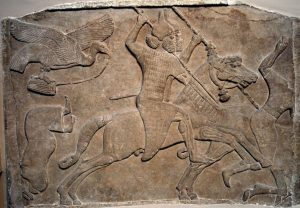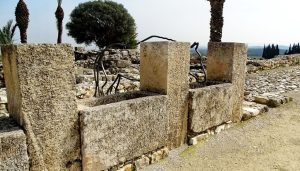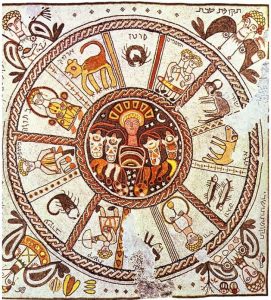A Jewish ruler has many responsibilities and obligations. He also has many temptations. To keep him on the right path, the Torah restricts the king’s possessions and activities. Besides ensuring that he reads the Torah regularly, he cannot have too many wives, too much money and too many horses:
“Moreover, he shall not keep many horses or send people back to Egypt to add to his horses,” (Devarim 17:16)
The Gemara in Sanhedrin discusses these prohibitions and tries to reconcile them with the Biblical information about King Solomon’s large numbers of stables. Despite the rationale given – that a king needs to have horses for his army – the Gemara still censures Solomon for thinking he is more clever than the law:
“And Rabbi Yitzḥak says: For what reason were the rationales of Torah commandments not revealed? It was because the rationales of two verses were revealed, and the greatest in the world, [King Solomon], failed in those matters. . . . And it is also written: “Only he shall not accumulate many horses for himself nor return the people to Egypt for the sake of accumulating horses” (Deuteronomy 17:16), and Solomon said: I will accumulate many, but I will not return.” (Sanhedrin 21b)
Why is an excessive number of horses considered to be a mark of hubris for a king? To understand that, we need to look at the history and the symbolism of horses in the Bible and in the Middle East in general.
Horses were domesticated and brought to Mesopotamia and Egypt about four thousand years ago. The most common variety of horse in our area is what is known as the Arabian horse:

Ealdgyth, CC BY-SA 3.0 <https://creativecommons.org/licenses/by-sa/3.0>, via Wikimedia Commons
They were known for their beauty as we can see in from this verse in the Song of Songs, where the beloved is compared to a horse in Pharaoh’s chariot:
“I have likened you, my darling,
To a mare in Pharaoh’s chariots:” (Song of Songs 1:9)
Horses were not really considered work animals, at least not in the Land of Israel. The mule and donkey (see here) as well as the ox, were harder working and able to navigate rough terrain better than a horse. So what were horses used for?
The horse, along with the chariot it pulled, was a symbol of power. This is one reason why the king cannot have an excessive number; he should not see himself as all-powerful. The Bible gives us many examples of using horses to show power. When Avshalom starts to plan his coup against his father David, he procures horses and chariots:
“Sometime afterward, Avshalom provided himself with a chariot, horses, and fifty men to run before him.” (Samuel II 15:1)
His half brother Adoniyah does the same in his failed bid for the monarchy (Kings I 1:5). Centuries later and many miles away, Haman adds a horse to his list of what should be done to the favorite of the king. Unfortunately for him, the rider turns out not to be him but his archenemy Mordechai:
“And let the man whom the king desires to honor be attired and paraded on the horse through the city square, while they proclaim before him: This is what is done for the man whom the king desires to honor!” (Esther 6:9)
Horses were also a sign of military might. The downfall of Pharaoh while chasing the Israelites into the sea is preceded by the description of his strength, which of course is tied to his horses: horse and rider are hurled into the sea (Shemot 15:1). When the Torah describes soldiers’ fear at going to war, it explains that the soldiers are afraid of the sight of the horses and chariots:
“When you take the field against your enemies, and see horses and chariots—forces larger than yours—have no fear of them . . .” (Devarim 20:1)
Part of this terror stems from the fact that the Israelites did not have the cavalry and chariots that the enemy did. When they entered the land, they encountered the Canaanites who had iron chariots and therefore controlled the plains:
“The Israelites cried out to God; for he [Sisera] had nine hundred iron chariots, and he had oppressed Israel ruthlessly for twenty years.” (Judges 4:3)
The Bible emphasizes that horses come from outside the land, often from Egypt. Sometimes we ally with our erstwhile enemies and they provide us with horses but this will not be enough for us to succeed:
“Those who go down to Egypt for help
And rely upon horses!
They have put their trust in abundance of chariots,
In vast numbers of riders,
And they have not turned to the Holy One of Israel,
They have not sought God.” (Isaiah 31:1)
Horses and chariots were one of the most powerful weapons in ancient times. We read about them in inscriptions and see them in reliefs like these from Assyria:

British Museum, CC BY-SA 3.0 <https://creativecommons.org/licenses/by-sa/3.0>, via Wikimedia Commons
Despite the prevalence of all this “horsepower,” the emphasis in the Bible is that power comes from God. Over and over the prophets subvert the idea of this earthly power and substitute a heavenly power:
“They [call] on chariots, they [call] on horses,
but we call on the name of the Lord our God.” (Psalms 20:8)
Eventually the kings of Judah and Israel have their own horses and chariots. Archaeologists are divided over whether Solomon really has as many horses and stables as is described (Kings I 10:26) but by the time we come to King Ahab of Israel, about seventy-five years after Solomon, we have outside evidence of his military might. An Assyrian inscription from Shalmanesser III documents the coalition arrayed against him, Ahab the Israelite has the most chariots of any of the allies:
“1,200 chariots, 200 cavalry, 20,000 soldiers, of Hadad-ezer, of Aram;
700 chariots, 700 cavalry, 10,000 soldiers of Irhulêni of Hamath,
2,000 chariots, 10,000 soldiers of Ahab, the Israelite,” (Shalmanesser III monolith, 850s BCE)
In the powerful city of Megiddo that Ahab strengthens, we find stables complete with troughs and hitching posts for his horses:

Zeller Zalmanson Pikiwiki Israel, CC BY 2.5 <https://creativecommons.org/licenses/by/2.5>, via Wikimedia Commons
Ahab’s military power was admired and envied by his neighbors but the prophet Elijah was not impressed. He wanted the people to rely on God, not on the false gods that Ahab and his Sidonian wife Jezebel promote. And indeed, when Elijah ends his time on earth, he does not die but is instead carried away to heaven in a chariot of fire, pulled by horses of fire. His disciple Elisha calls out:
“ ‘Oh, father, father! Israel’s chariots and riders!’ ” (Kings II 2: 12)
Who is the true “chariot” of Israel if not God and His prophet?
Despite the messages of the prophets, horses and chariots remained potent symbols of power. They were depicted as pulling the gods along or, in the Jewish version, the winds of the world (Zechariah chapter six). A pagan image of Helios the sun god, pulled by a chariot with four horses, appears in the synagogue mosaic in Bet Alfa, among other places:

Levan Ramishvili from Tbilisi, Georgia, Public domain, via Wikimedia Commons
Today horses have mostly been replaced by tanks and jets for military power and by cars for status symbols. What would a king need to avoid today?










